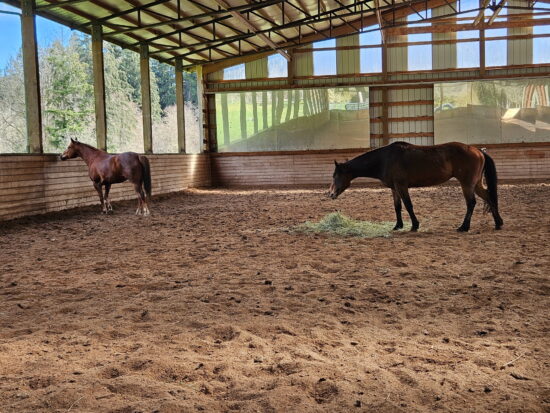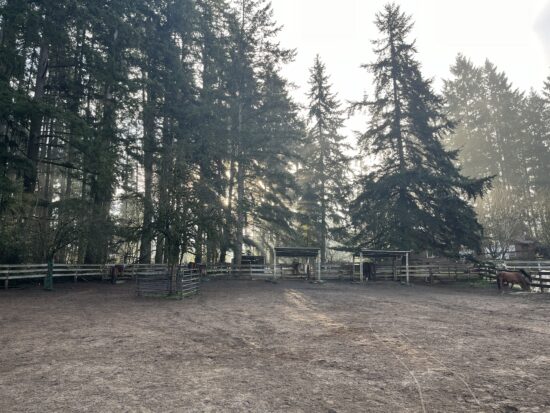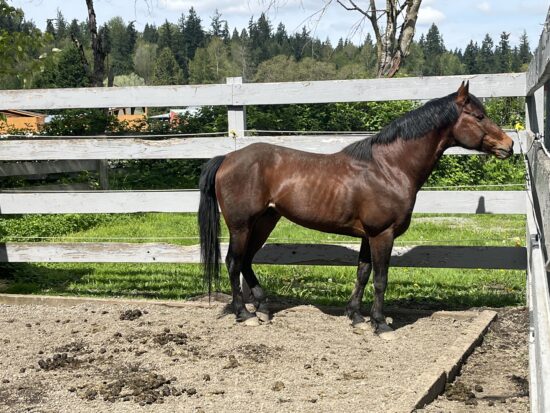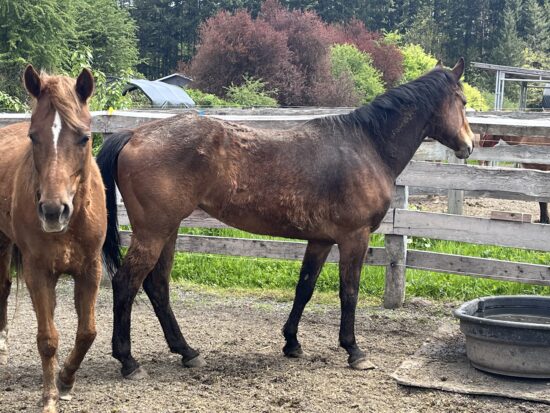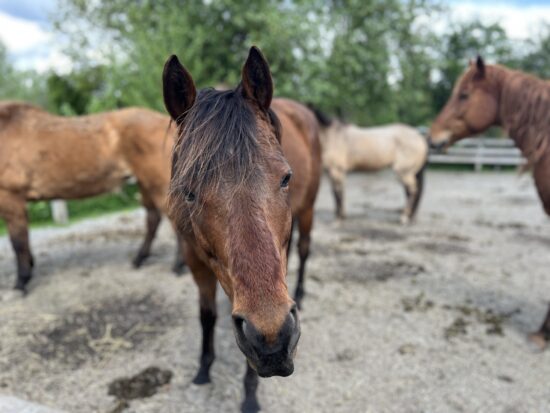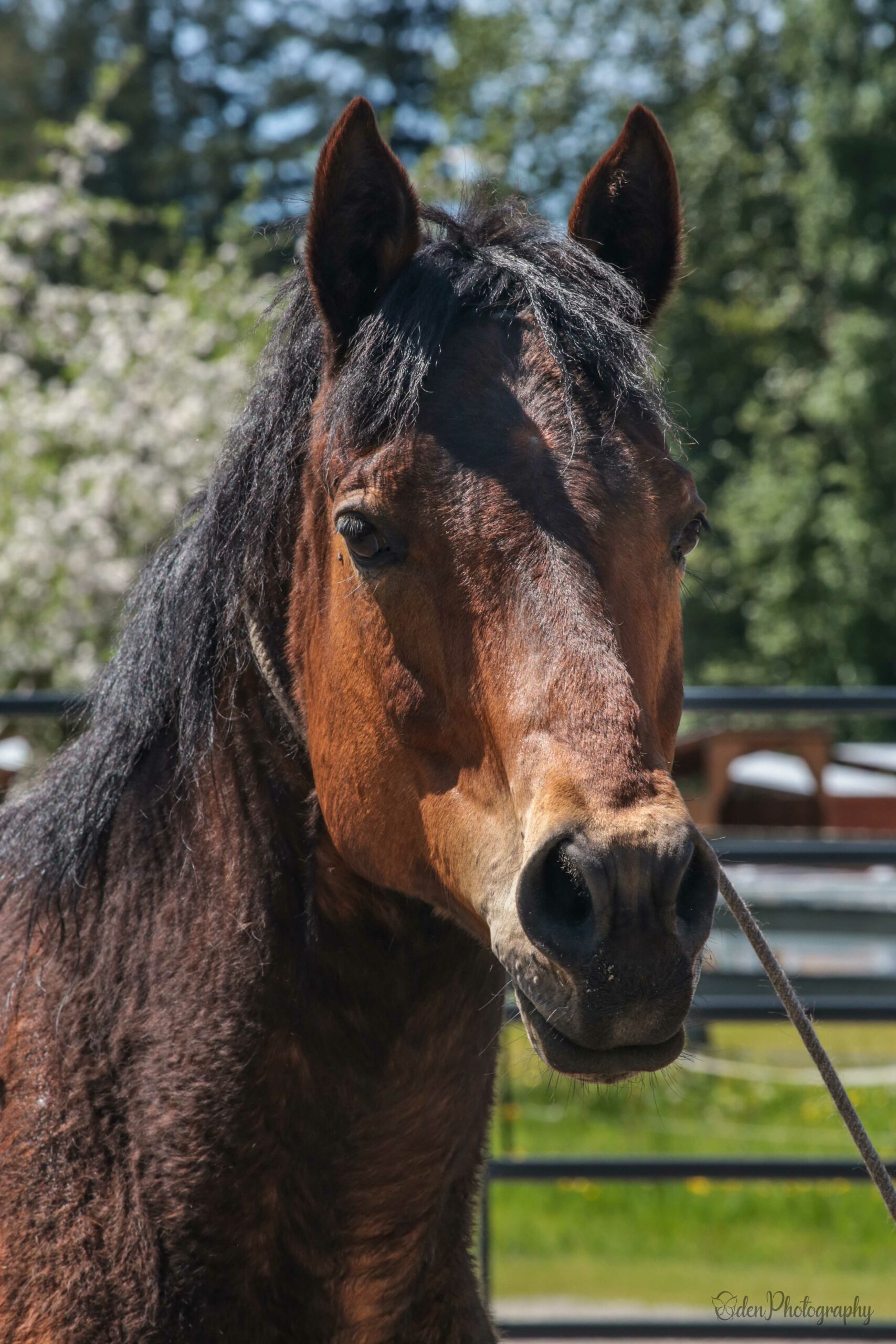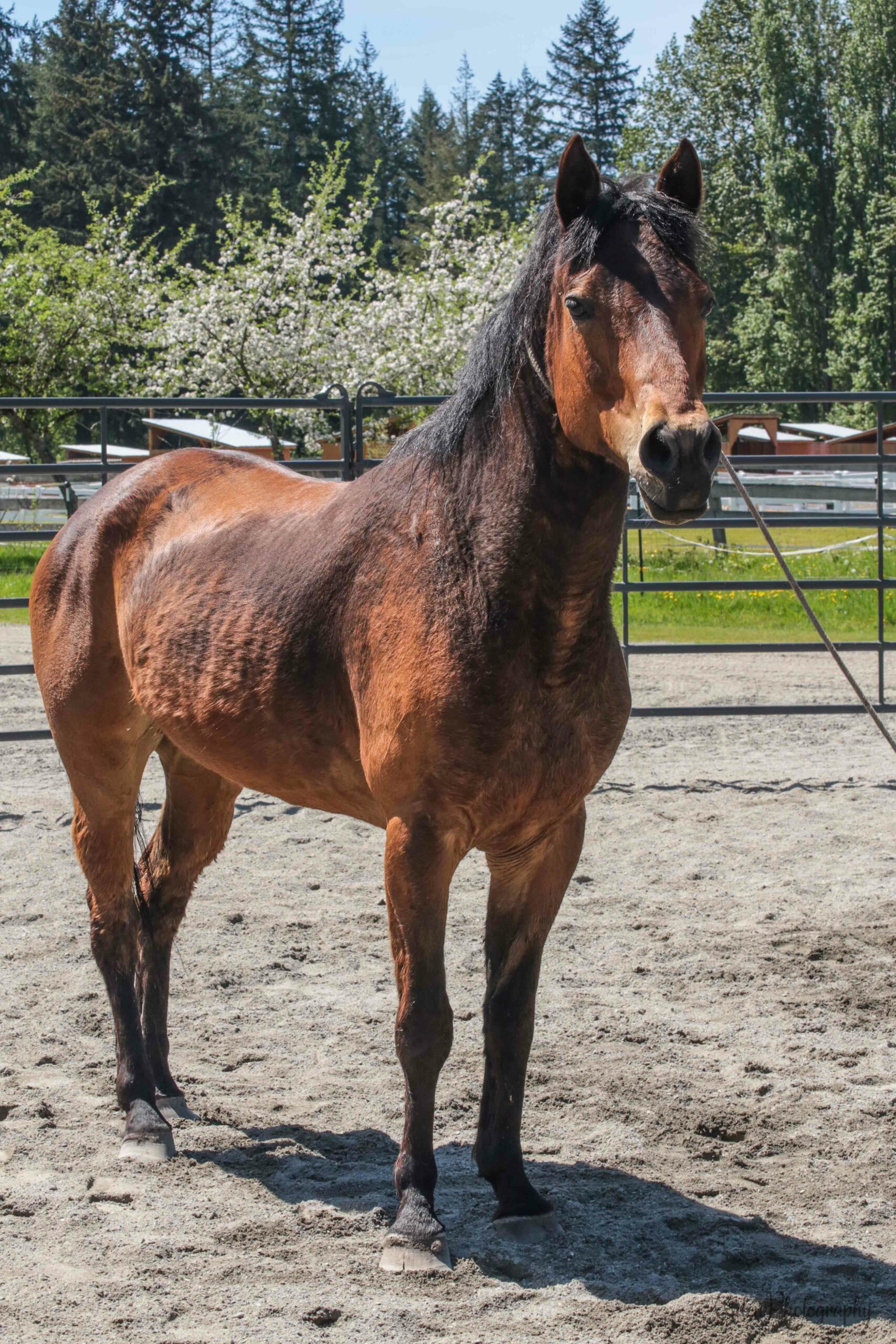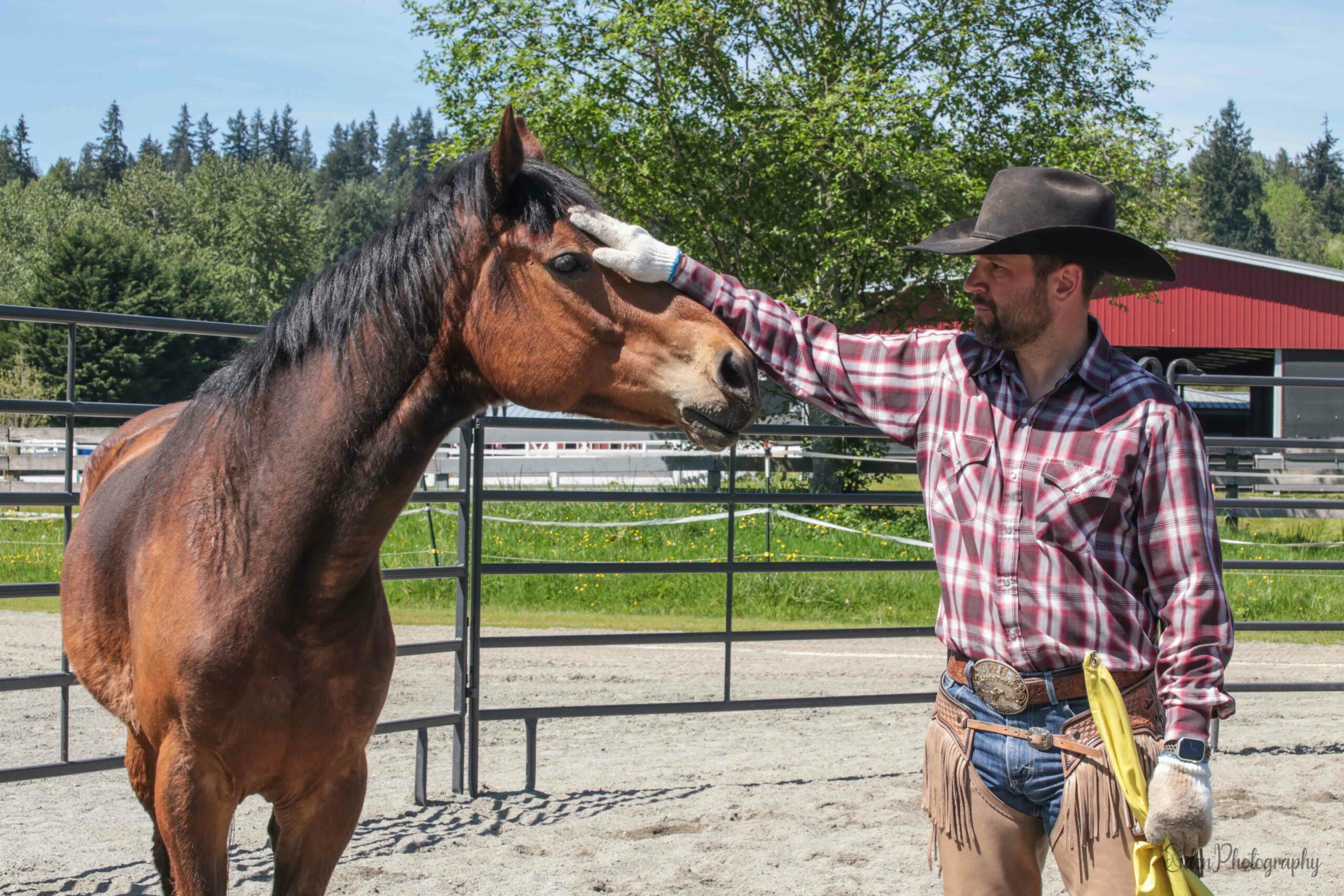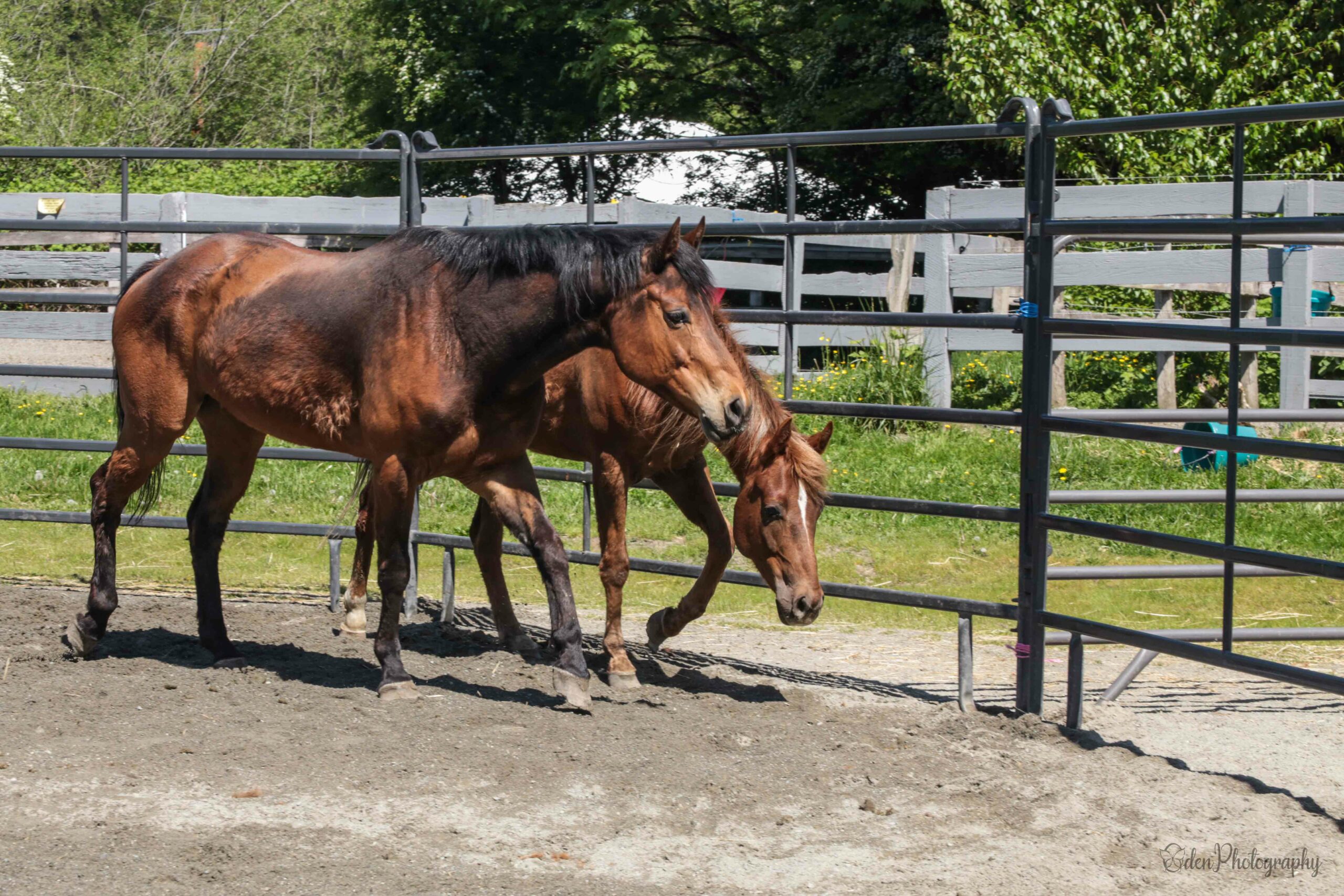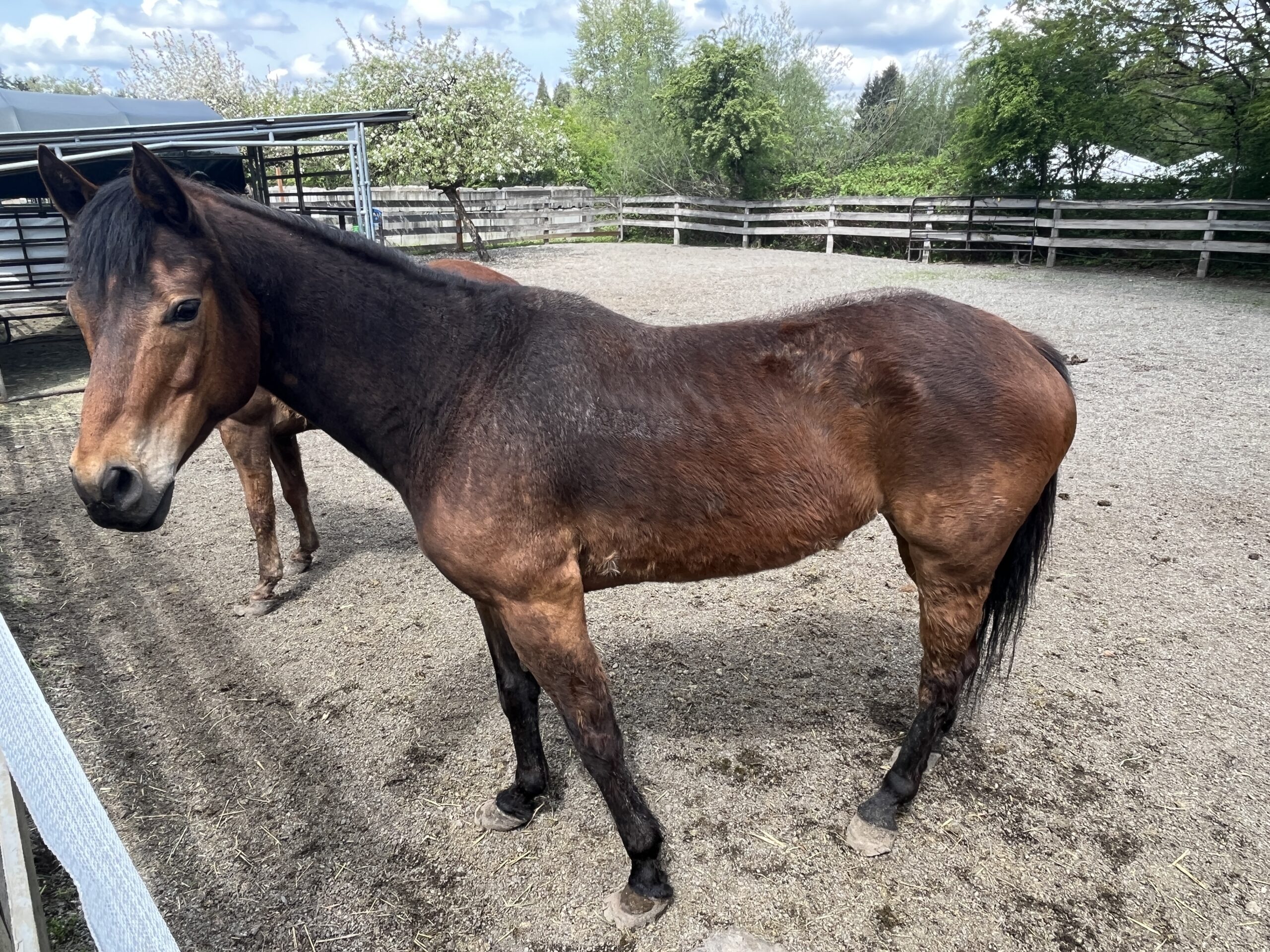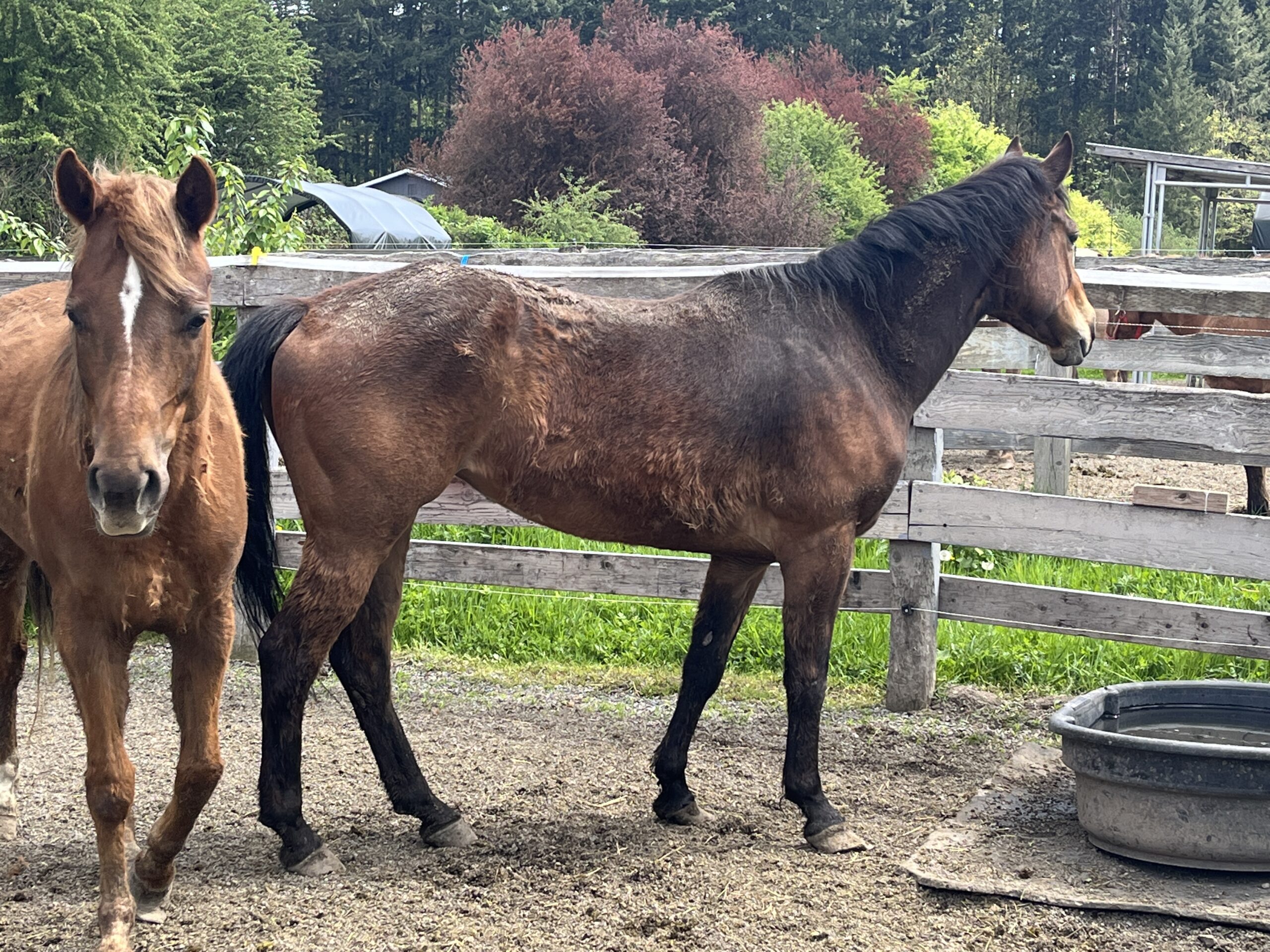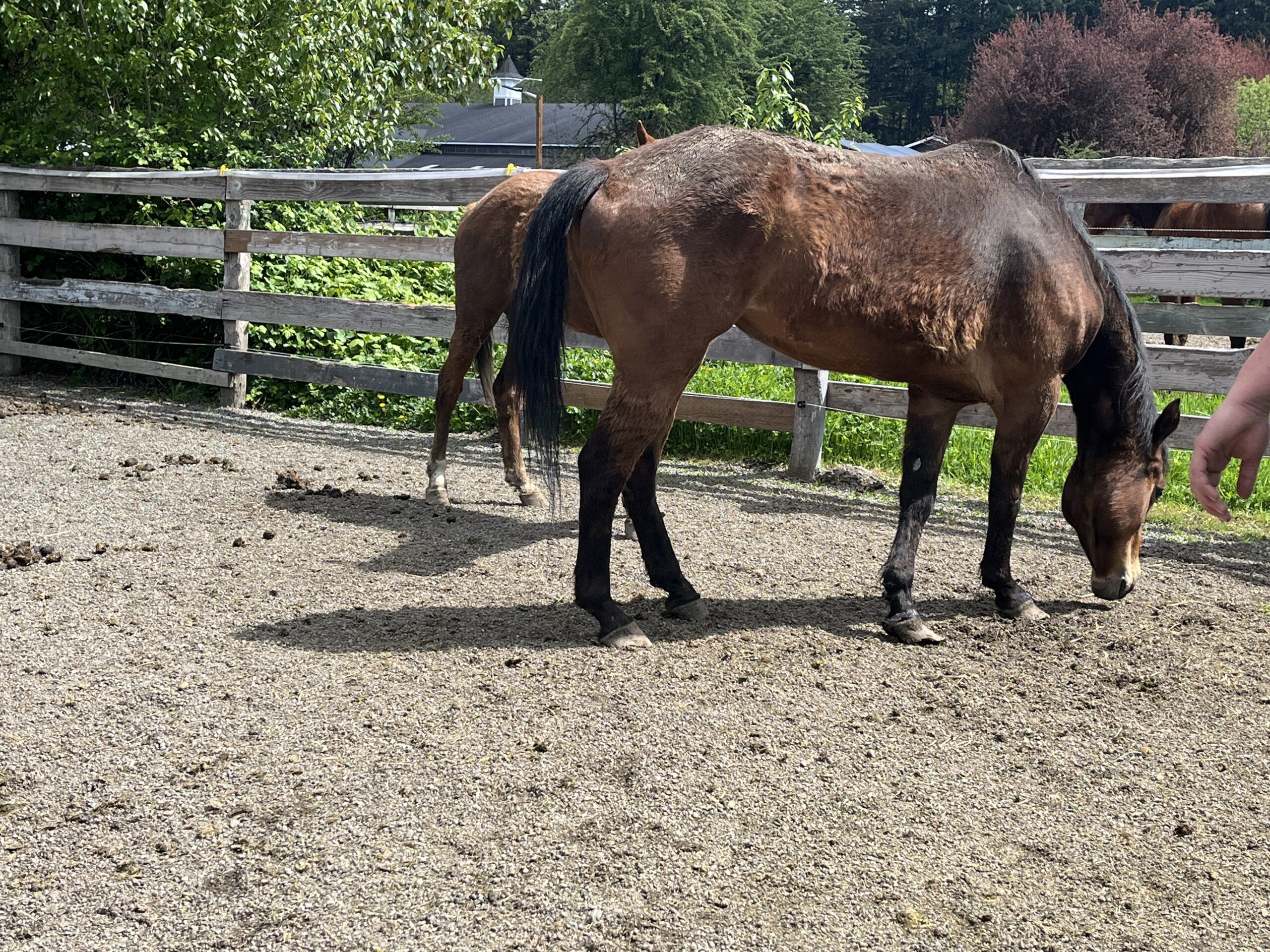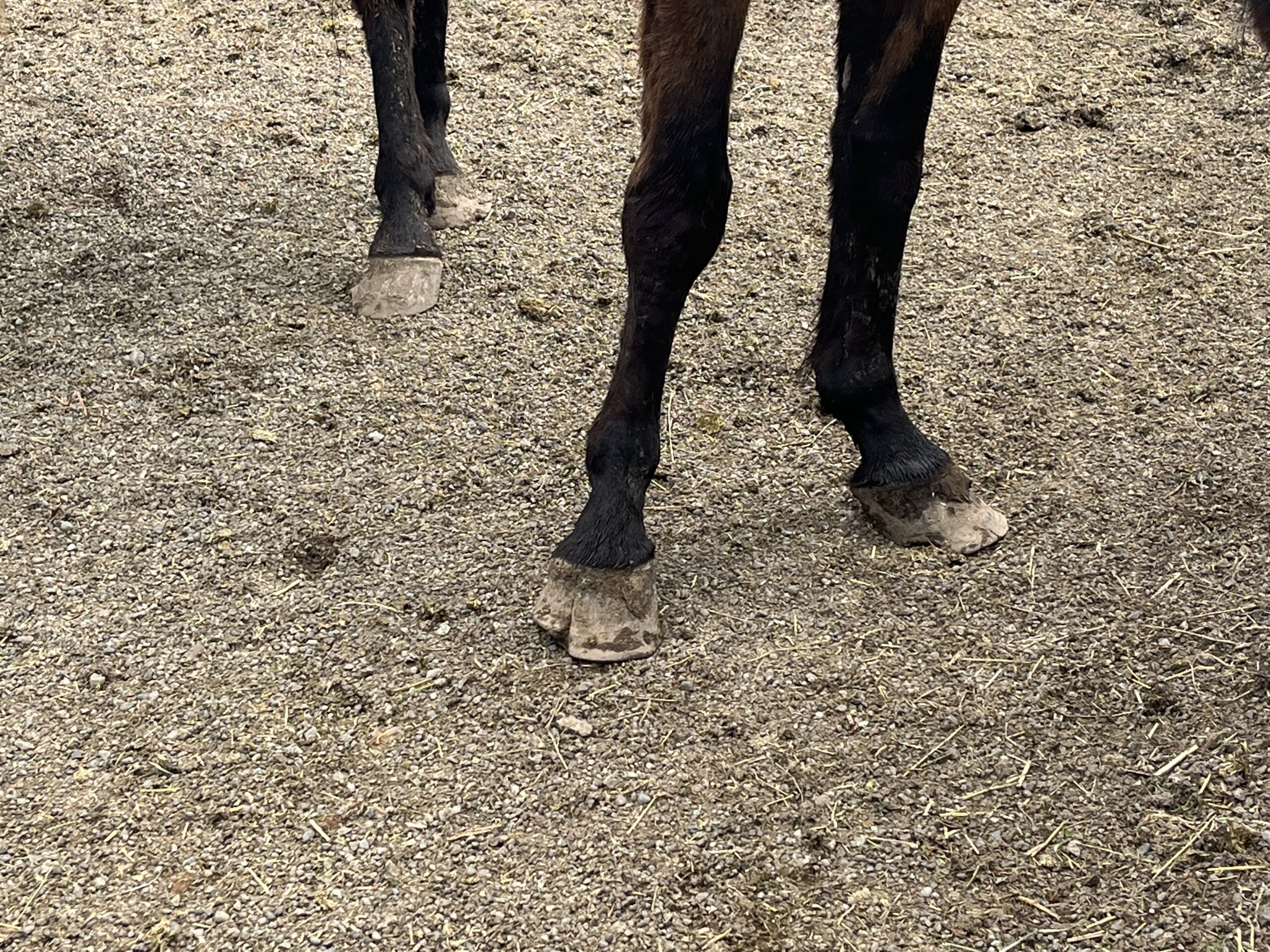Ciara
2011 Quarter Horse mare
Suitability: Companion, for Intermediate Handler
Color: bay
Markings: thin blaze
Height: 14.1h
Weight: 840lbs
Adoption Fee: $300
Ciara came to SAFE in May of 2023 as part of a 7 horse owner surrender situation in the Gig Harbor area. She, along with her 6 herd mates, were living in poor conditions, surrounded by broken panels, standing in deep mud, without clean water.
Ciara had likely had some handling before arriving at SAFE, but it left her reluctant to get caught and rather ‘stuck’ in her feet. But she is a quick learner, and was able to see the vet and farrier not too long after her arrival.
The next step will be continuing to prepare Ciara to be a riding horse. This is a process that takes a varied amount of time, and for Ciara, might take longer than for some, but we will support her in the way she needs as she grows her education here at SAFE. In the meantime, Ciara has come far enough along that she is ready to go out as a companion!
All SAFE horses are adopted with a no-breeding clause, no exceptions.
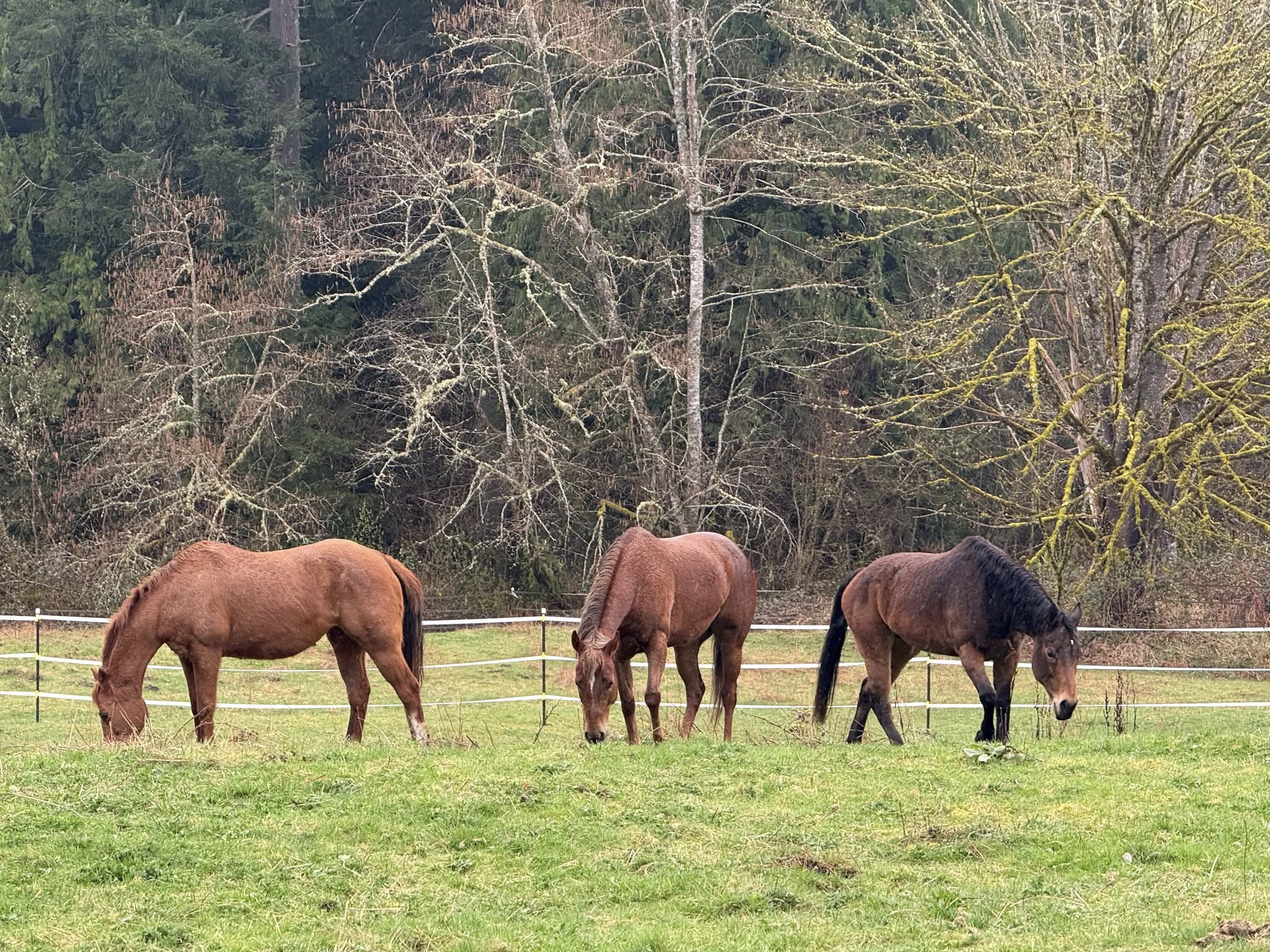
Ciara and Inula are Adopted!
We are jumping for joy to announce that Ciara and Inula have been adopted, together! These two came to us in 2023 as part of a 7 horse seizure out of Gig Harbor. During their time at SAFE, they both told us they would be better suited for the companion lifestyle: Ciara had a particularly tough time adjusting to wearing a saddle, and Inula has a case of ringbone despite her youth. Through our horsemanship program, they progressed through the checklist of basic skills they would need to be good equine citizens, and both made transformations from standoffish and flighty mares into sweet and personable companions. Ciara and Inula also had the chance to ‘field test’ adoption by spending time at (separate) foster locations, where they fit in great to different herd dynamics. These two are kind to both horse and human.
Enter Eric. When it came time for him to make the kind decision to help his older mare, Rosie (also a SAFE Alumna) out of pain, he reached out looking for a new companion for his other mare, CJ. After talking it through, he decided he would like to take both Ciara and Inula home. The pair arrived to help CJ with Rosie’s passing, and settled right into their new home.
Since then, the trio have been hanging out peacefully alongside the rest of Eric’s menagerie of pigs, goats, turkeys, and chickens.
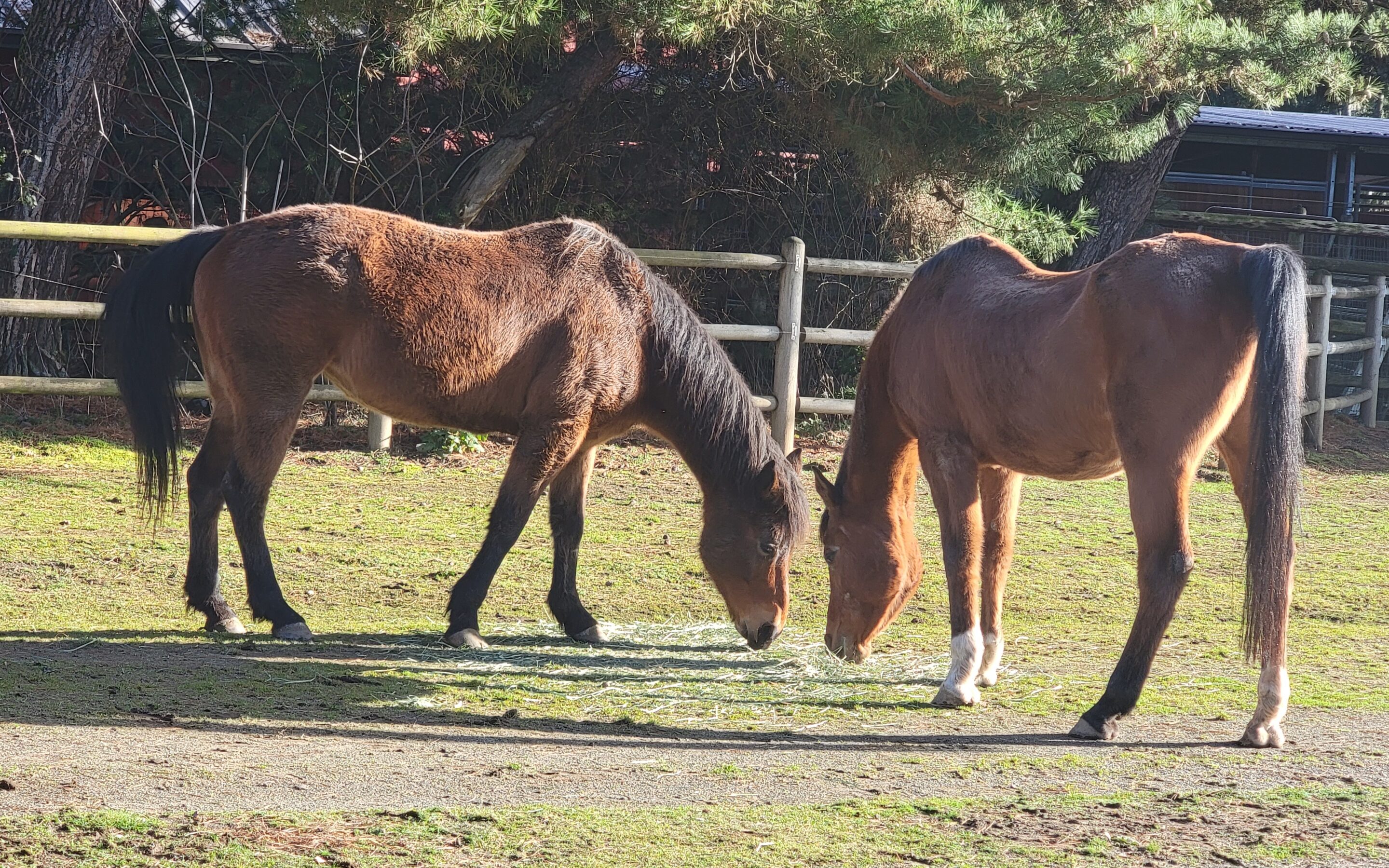
Ciara at Foster
Sweet Ciara went off to foster this winter, at a lovely spot just down the road from SAFE. Her foster family had just lost their gelding, and were in need of a companion for their older mare. In the herd settings she had been tried with here, Ciara was an easy-going and deferential pasture mate, which made her a top choice for slotting into a new environment. Her kind personality translates to her interactions with humans as well, making her easy to love and to be around for those on two and four legs alike.
Though at first Ciara was kept separate from her new herd mate, once they were introduced they became fast friends. Ciara’s foster mom reports that they seem very comfortable together, and that they will share from the same pile of hay without incident.
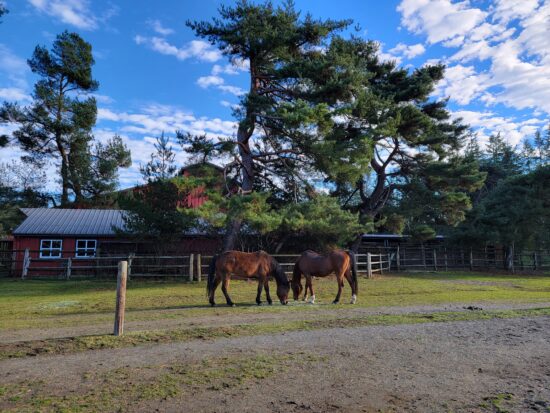 We are so thankful to this foster family for taking such wonderful care of Ciara, and for giving her a good friend in her home away from home!
We are so thankful to this foster family for taking such wonderful care of Ciara, and for giving her a good friend in her home away from home!
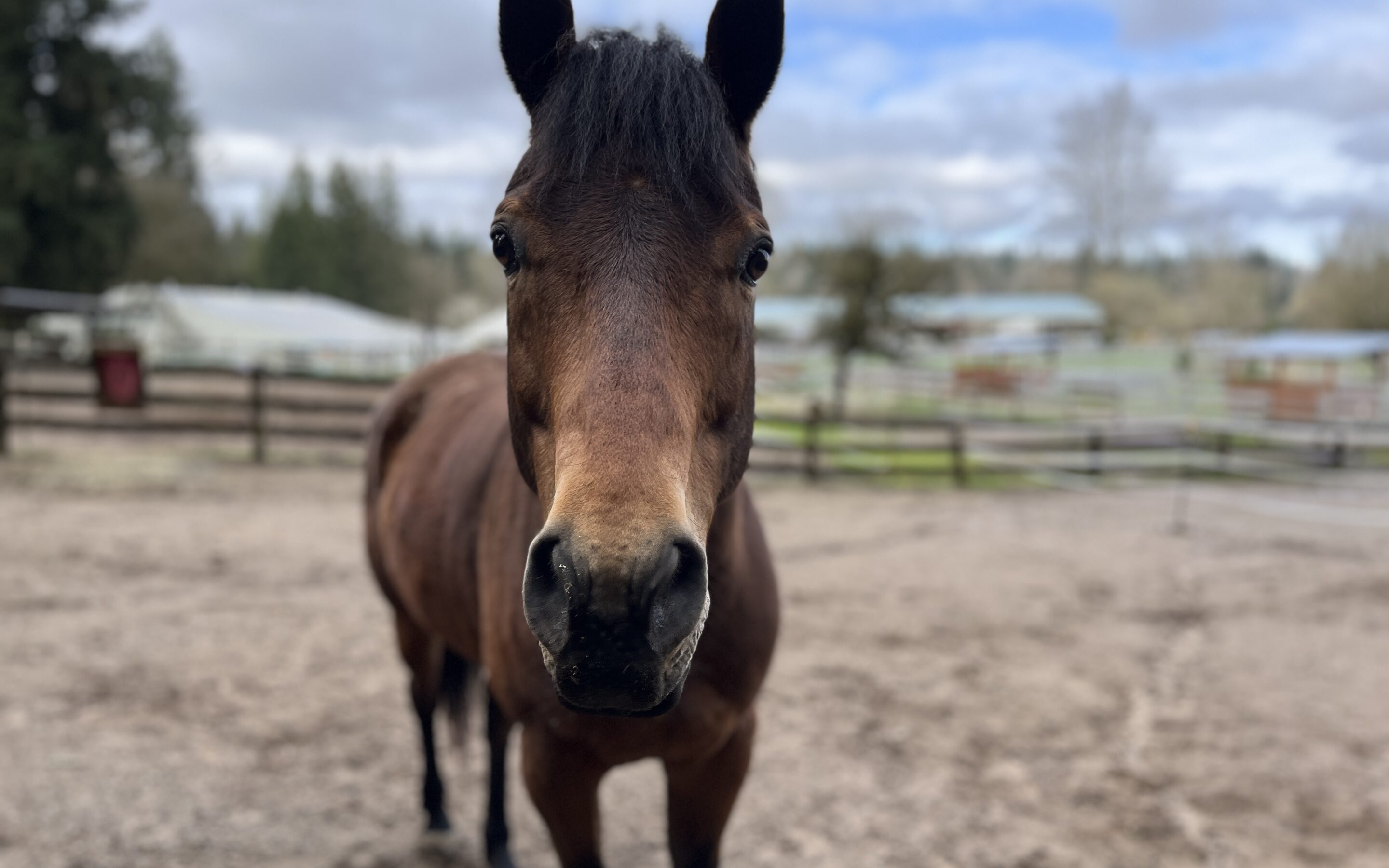
Ciara’s Crossroads
We talk a lot about ‘time’ here at SAFE, the time it takes for a horse to reach certain milestones (varied), the time we give them to get there (endless, for the most part). But to frame this in a linear style is not always the most accurate. Yes, the paths some horses take are mostly straight, but some horses’ roads are a bit more circuitous, doubling back on themselves. This does not mean, necessarily, that forward progress is not still being made, it just looks a bit different in certain cases.
Ciara is a perfect example of a road that winds a bit. Ciara came in with the Gig Harbor horses, back in May of 2022. She, along with the majority of her cohorts, was not halter broke, and therefore needed things to start at square one. She had a terrible understanding of what it meant to give to pressure, and her earliest sessions on the end of a rope involved a lot of pulling or pushing into that which was asking her to give. But with time and patience, her understanding grew, and she began her transformation into a mare who was beginning to look more ‘domestic.’
We set Ciara on the course to be a riding horse. Given the fact that, despite not being halter broke upon arrival, she had certainly been ‘messed with’ before, we knew that her journey towards this end might not be the easiest of them all. But she was not the first horse of similar background and temperament that we had successfully started under saddle, and nor would she be the last.
We began with the usual preparation — flags and ropes and tarps and pads, combined with loads of hindquarters, changing eyes, bringing the front across, all the blocks that build a successful horse. After a good while of this, we determined Ciara was ready to be cinched up.
Despite her preparedness and the support we gave her through the process, saddling was not easy for Ciara. This can sometimes be the case, where it takes more groundwork and more experiences being cinched up before the horse begins to feel more comfortable. After that initial saddle, we continued to work and saddle her, hoping that repetition would increase her comfort and understanding of the process.
And while it did, Ciara’s rate of change was not as fast as we would have hoped. On a “Monday,” she was troubled by the saddle, and while she was able to be talked out of the majority of her worries by a confident support on the end of the line, they were still there not far below the surface. As the week progressed, she did better and better, and typically by her “Friday,” she was more feeling and understanding of the saddle’s presence.
But the process would begin again come the next ‘Monday.’ Ciara did not vacation well, and while she maybe started a little further than she had the week prior, it was not the trajectory that we would have hoped. While we are accustomed to horses who have trouble, who need extra time and support, we do reach a time of crossroads where we need to determine whether or not it is in the horse’s best interest to continue on their current trajectory — in this case, to be a riding horse.
There is no less value in companion horses, and a horse’s ability to carry a rider does not make them more worthy in our eyes. However, the reality is, horses who have some kind of start under saddle are ‘safer’ in the long run. It tends to be more difficult to re-home a companion horse than a horse who has some experience being ridden, and in our efforts to ensure our charges a lifetime of safety, we try to give them the most amount of tools in their belts.
But there definitely is a time when we decide that the best course of action is to retire a horse from the riding program. We gave Ciara a little while off over the winter months, with the plan to re-evalute where she (and we) are at in this new year. As she gets back into the working swing of things, we will once again work towards saddling with the hope that the positive experiences we were able to give her stayed ingrained during her time off. From there, we will chart a course for Ciara’s future, either as a riding horse like originally planned, or as a companion horse. Regardless of what we decide, the time we have spent thus far has not been in any way wasted, and every moment with this sweet mare has been one helping her prepare for her future, whatever that might look like.
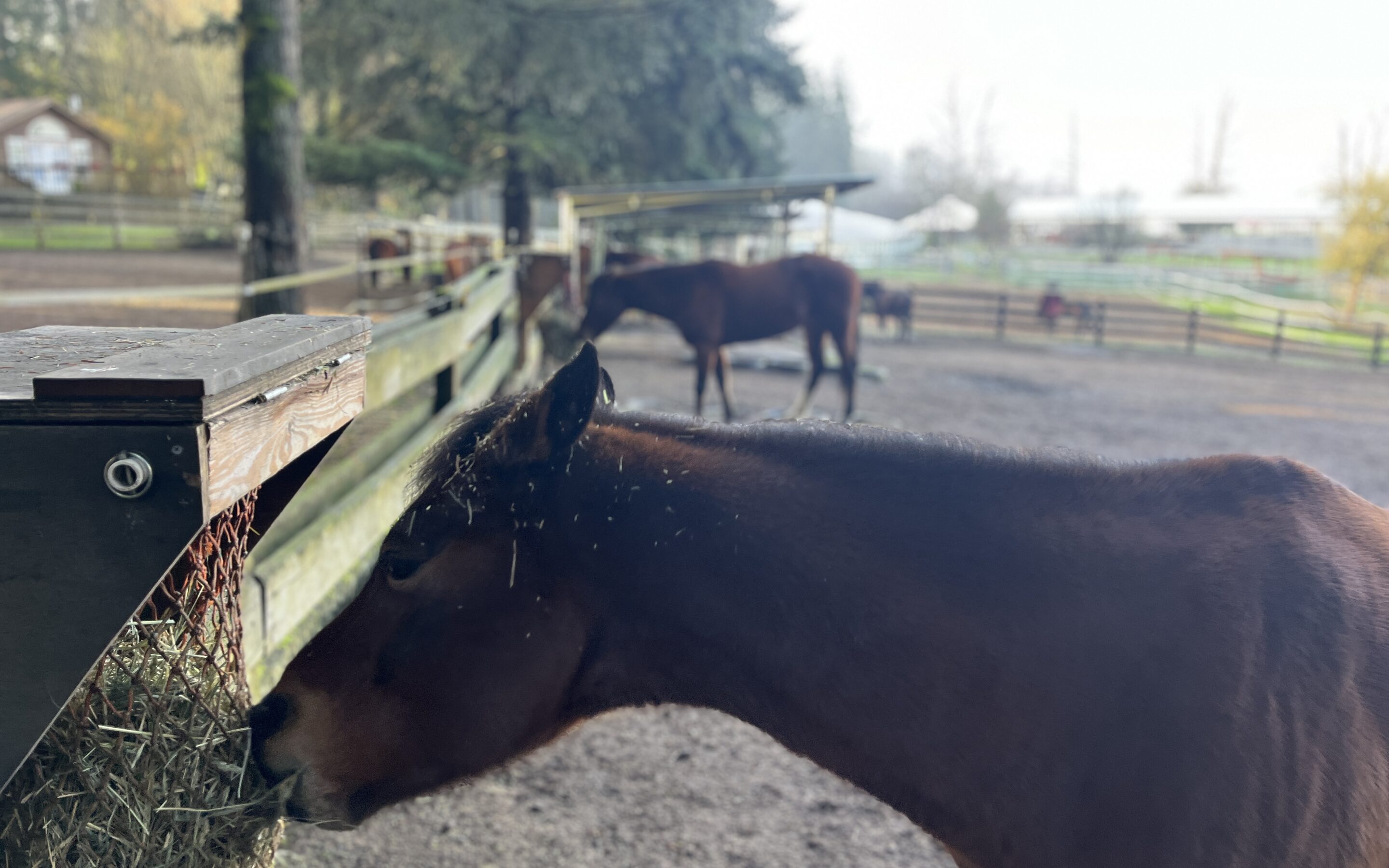
Brunch with the Gals
Ciara joined one of the mare herds recently, making new friends with Fancy, Frosting, Bijou, and Inula (who was already a known quantity to her, being her daughter and all). Ciara is a good herdmate in that she is the opposite of meddlesome. In fact, at the first sign of a potential altercation, she is removing herself immediately and with haste. She respects a leader and does not care to challenge for a more senior position in the herd, more than happy to stay firmly in her lane. She took to Frosting, and the two of them can occasionally be seen communing together (especially when Fancy, the de facto mother of the group, is off getting worked), and she and Inula, despite living together once again, keep healthy boundaries and have thus far avoided becoming herd bound to one another.
Each morning when the herd goes out to eat, the girls line up at a hay box, and enjoy their breakfast together. The order might change by the day, and they do play musical hay boxes (Ciara always is quick to vacate at the first sign of trouble), but it’s wonderful to see these lovely ladies all getting along!
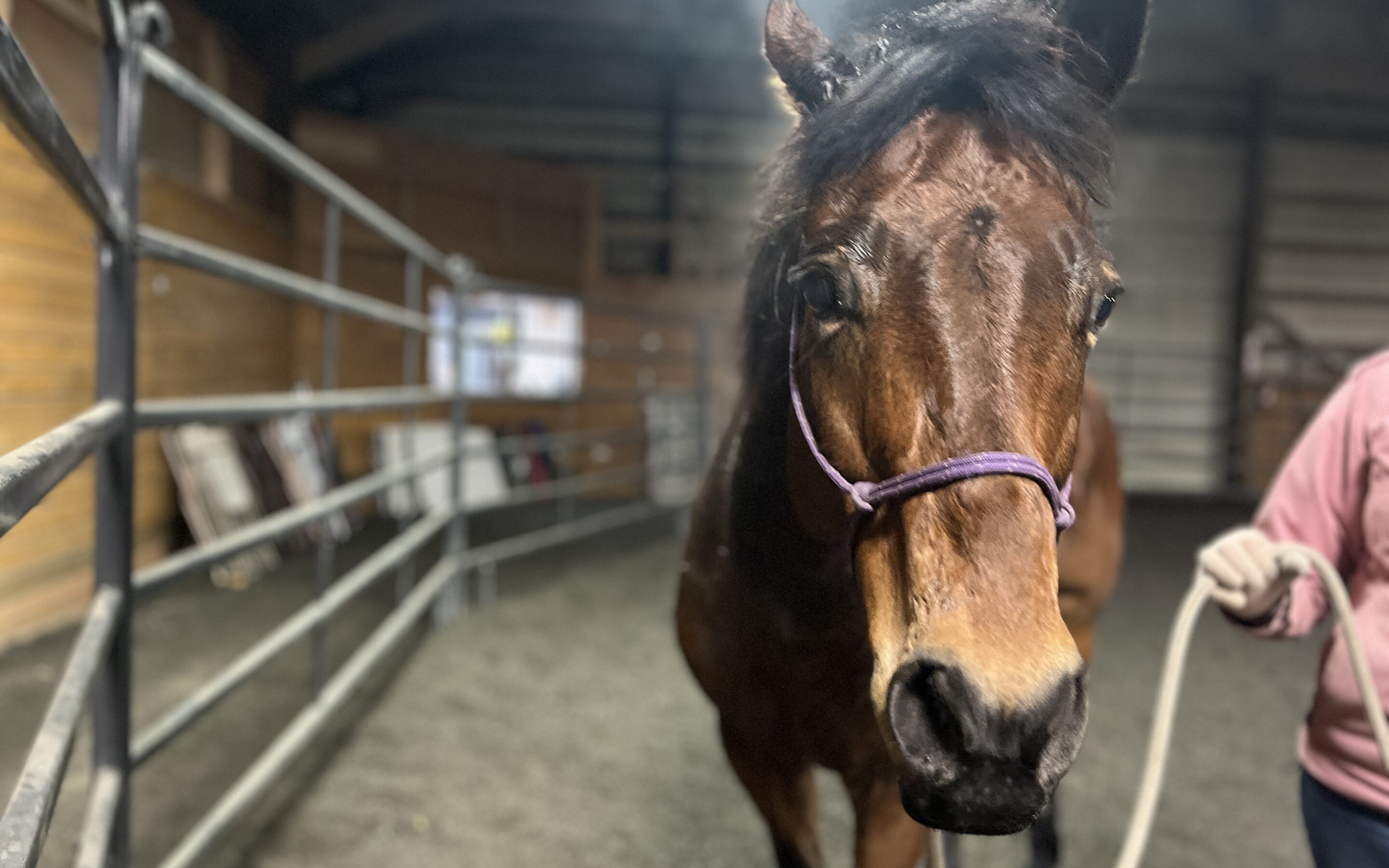
November Clinic Report: Ciara
Kaya M worked alongside Ciara at the November Joel Conner clinic and had the following experience:
“We learned a lot about Ciara during this clinic and unfortunately discovered she wasn’t quite as comfortable being saddled as we’d thought she was. I threw my saddle on her on the first day of the clinic, not really thinking anything of it and Ciara had a really hard time feeling comfortable changing eyes on it and dealing with the pressure of the back cinch. We worked through it that first day and ended with a mostly relaxed mindset. The next two days of the clinic, I groundworked Ciara without a saddle on and focused on getting her to turn loose to things on her off eye and feel really comfortable with the flag and rope all over her. Lexee saddled her on the lunch breaks and, while she still bucked more than she had been prior to the clinic, she got better each day. We have a plan to saddle Ciara every day to make sure that she can feel comfortable being saddled so that we’ll be able to start her as a riding horse in the spring!”
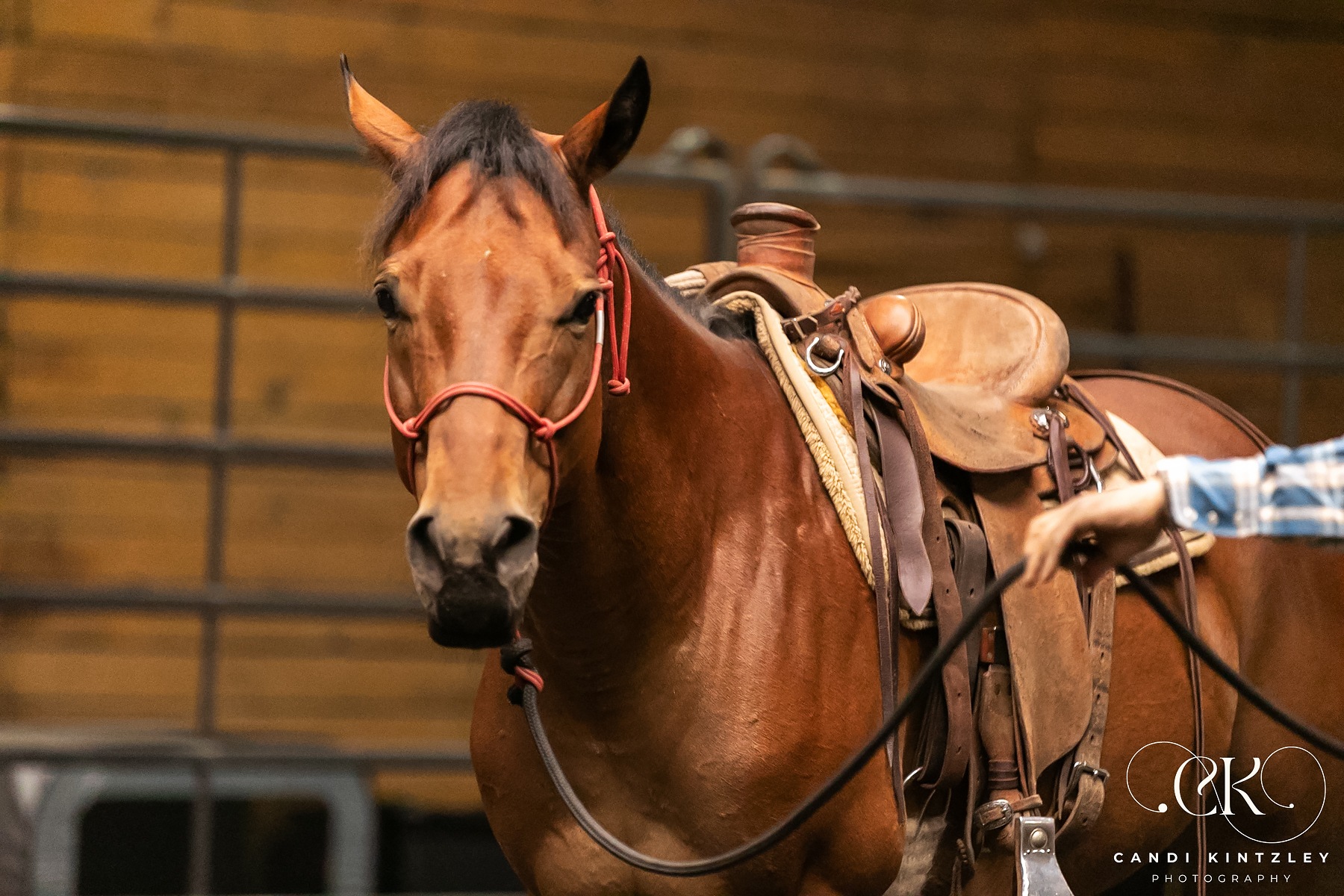
Ciara’s Saddling Journey
Ciara came to us as part of a larger seizure in Gig Harbor, alongside a tableau of horses who, aside from their lack of proper care and handling, were, as is the nature of all living creatures, of varied personalities. The ‘easiest’ of the bunch were Ciara’s daughter Inula, along with Wren, who were relatively uncomplicated as far as horses who haven’t had much quality handling go. Meadow and Mirana, the two older matriarchs, were sweet and spicy respectively, while Harissa, presumably a daughter of one of those mares, was all spice. Lance, the stallion, arrived shy but curious, and really without much stallion bravado.
And Ciara?
Ciara, unlike some of her other counterparts, was more willing to be handled — if not immediately, then after just a bit of gentle coaxing. But she had a pretty severe misunderstanding of what it meant to give to pressure, which would make the road ahead a bit more challenging. What she had learned in the past would no longer serve her, if it ever had to begin with.
At her dental, our vets estimated her to be around 12 years old. 12 years of going through the world feeling stuck and unbalanced, of pushing into pressure. She was, as is the case with so many horses who come to SAFE, not set up for success. But we felt Ciara could make it.
When the horse is young enough, and fit enough, we put them on a track for being saddled with the intention of eventually carrying a rider. This path doesn’t always pan out — occasionally we discover health issues that make saddling a non-option (as was the case for Ciara’s daughter, Inula), but when possible we try to get a horse going under saddle. This serves many purposes. Of course, in an ideal world a horse who wears a saddle also carries a rider, and finds a forever home as a riding horse. A riding horse has a more protected future, which is the tough reality of the horse industry. It is not impossible, but more difficult, to rehome companion horses. But even if a horse never carries a rider, for whatever reason, learning how to wear a saddle is great for their education in many ways. It helps them to be comfortable with things in their off eye, makes blanketing significantly easier, and in general helps to better prepare and gentle them for a successful future.
Ciara had presumably never been saddled or ridden before. With 12 years under her belt, it is not possible to know all the events that transpired in her life, but we can make a very fair assessment based on how she reacted to even the most basic handling.
We of course started her with a great deal of groundwork before even approaching the idea of saddling. Touching her with the flag and the coils of a rope all over, throwing a pad up on her back, roping her around the belly and moving her out to get her comfortable with the idea of what a cinch would be like. There are many steps in the process to help a horse be able to understand and navigate what it will be like when they are cinched up for the first time. But the inevitable truth is that the saddle presents an entirely new set of circumstances that are impossible to fully replicate. While we try our best to prepare the horses as fully as we can, there is always an element of the unknown involved when we do first saddlings.
Despite all of the hours and hours of prepwork, Ciara had a difficult time the first time we cinched the saddle up. Joel was there and able to support her through it to the best of his ability, but it was clear that Ciara’s trouble would make this a challenging obstacle for her to overcome. But by the end of the first session she was able to find peace, and we felt hope that the periods of uncertainty that surrounded saddling would be less and less as Ciara’s understanding and balance grew more and more. Joel was able to saddle her for multiple days in a row, and with each day, Ciara was able to end the session a little more settled than the day before. But because hers was such a delicate situation, we decided that the best route forward after Joel left would be to continue on with unsaddled groundwork.
Lexee spent many hours after with Ciara, throwing the saddle up (without cinching it), and continuing all the same exercises as before — roping, flagging, the works. Ciara has a lot of try, but also a lot of trouble that gets in her way. But what do we know about horses is that they have a tremendous capacity for change and growth. We were confident that this work with Ciara would not go unrewarded, and we were correct. The next time Joel was out and we cinched Ciara up, we found that Lexee’s work with her had not been for naught — she was much more understanding, and far less troubled about the cinch. However, we would not take this for granted. Progress is not always linear, and there is always the potential for a horse to slide back on their journey forward, but our hope is that Ciara will move forward with more momentum than any backwards slippage that is bound to occur.
We know that the road forward would be a long one, but walking alongside it with this sweet mare is a gift. She has already come so far, and we are looking towards how much farther she will go!
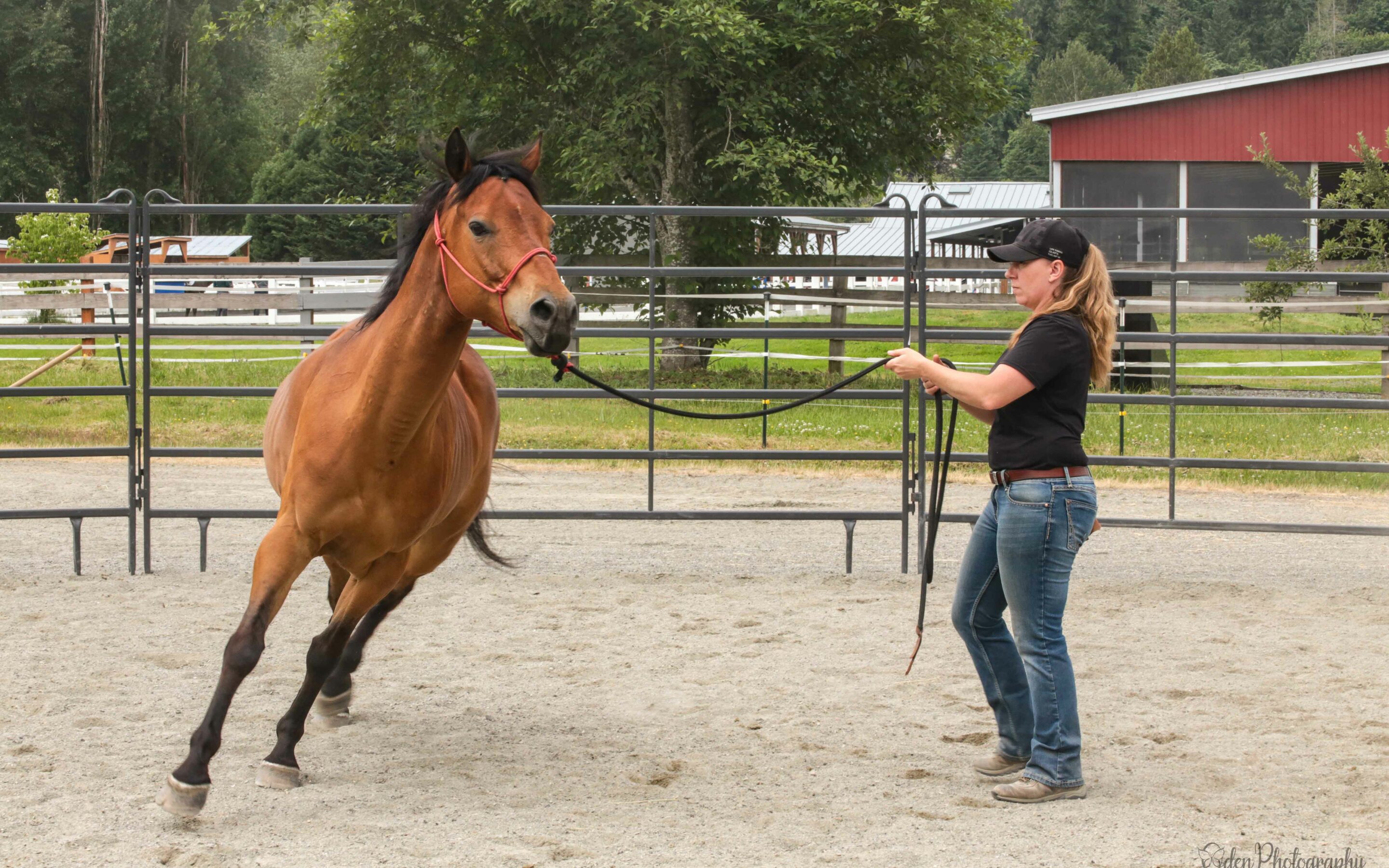
Introducing Ciara
Before she came to SAFE, Ciara was living alongside her filly, Inula, in a mud pit of a paddock. She was yet another of the Gig Harbor horses to arrive here back in May, and yet another who was afflicted by the same poor coat, long hooves, and lack of clean living conditions that also plagued her herd mates.
But when she stepped off the trailer that Saturday in May, her luck began to change.
Ciara is a curious mare, and while she was cautious and wary of people at first, we felt it would not take long to earn her trust. Over the fence on that first day, she allowed a few cursory head pets, and while she wasn’t accepting of a halter at first, it seemed to be more out of a bit of coy unwillingness versus fear or true misunderstanding.
So we started from the beginning. The time we spent with her in the round pen those first days reaffirmed for us that Ciara was a smart mare, but one who had learned some less than ideal concepts in her past, and was in need of a bit of a refresher. Ciara, like many of the other horses from her case, had a severe misunderstanding of pressure, defaulting to pushing into it rather than giving. She dragged against the feel of the rope with a bull-headed intensity, the concept of drawing in virtually unknown to her. It took a great deal of repetition, but eventually she began to get it, and by the end of day two was a bit more understanding of what was being asked of her, an understanding that would only increase with continued work.
Rome wasn’t built in a day, and it was clear Ciara had a good deal of un-learning and re-learning to do, but we were confident she would get there. We utilized her itchy coat as a way to get closer to her (who can refuse a good scratch?) but she was not ever really fearful of touch. Still, it took a bit of time before she was able to be caught out in her paddock, but we got there sooner rather than later. She was able to get her feet trimmed a few weeks after her arrival, and despite having some hesitation during those initial days of being asked to lift her feet, did very well for the farrier. She also saw the vet, both for vaccinations and a dental, and did very well for both. She has taken more and more walks outside of her paddock, into the big covered arena, and while cautious, becomes braver with each trip.
These days, Ciara continues her training, likely towards a start under saddle in the eventual future. The path ahead may still be long, but we are happy we were able to meet this mare to walk it with her.

Introducing the Gig Harbor 7
The majority of the horses who come to SAFE come as singles or in pairs. One here, one there, typically with some space in between arrivals. But on occasion, we are called to assist with a larger seizure. It hasn’t been all that long since the Fall City 40, and an even shorter period since we took in the Graham 27. Now, we were once again called to help with a multi-horse intake. Seven horses in the Gig Harbor area needed our help, the owner needing to quickly re-home horses that were not easily re-homeable. On the heels of the Graham horses, we felt a bit more prepared for a larger intake, but unlike the Graham horses, these horses had not had regular (or any) handling in some time.
So on a Saturday morning, we loaded up our trailers with panels, and set out with a robust team of people and a brigade of trailers and a plan to pull seven horses out of the mud.
Thanks to a ton of planning, a great deal of manpower, and an earlier scope of the property, we were able to successfully remove all the horses from the property over the course of just a few hours. We ran chutes from the pens, some quite winding and intricate, but everyone left unscathed, and arrived at SAFE in one piece.
Lancelot, the stallion, was the first to pull through the gates.
Next were mother and daughter, Ciara and Inula,
followed by the small herd of mares: Meadow and Mirana, the elders of the group, (and the only ones who allowed us to halter them), and Wren and Harissa.
Seeing them at SAFE was like seeing them with the lights clicked on for the first time. It was clear they were in need of some TLC, but out of the mud and muck, it became obvious just how much. Their feet were overgrown, slippered in some cases. The four mares had a line of what appeared to be rotten hair halfway up their legs, likely a result of standing in a high layer of wet ground. The mother and daughter stank, a smell like rotting, and while there was nothing visibly deceased on the property, it felt very much like a place where death lived. All of them, when confronted with clean water troughs, drank long and deep.
It was clear from the moment we set eyes on the horses that they would take some work to rehab and retrain. Even the mares who let us halter them were not keen on being touched much beyond that. We certainly had our work cut out for us. But this was not the first time that challenging horses had come through our gates, and it will not be the last. The road ahead might be long, but the most important thing is that these horses are safe now, and that is all that matters.
Ciara’s Friends:
1. Lara W.
2. Judy C.
3. Kate & Julia L.
4. C.C Schott
5. Ellen H.
6. ____________________
7. ____________________
8. ____________________
9. ____________________
10._____________________
Every horse deserves at least ten friends! Even a small monthly donation can make a difference. Plus, SAFE horse sponsors receive discounts at local businesses through the SAFEkeepers program!

